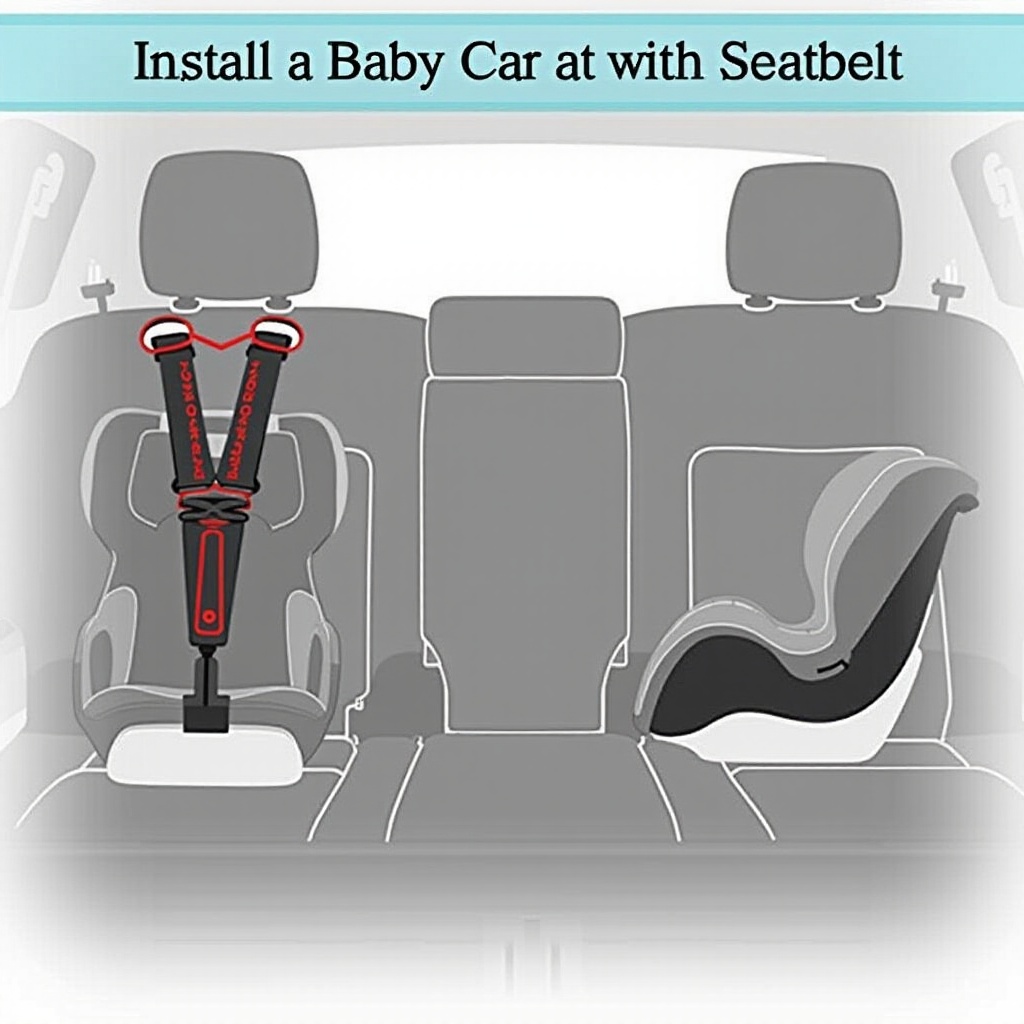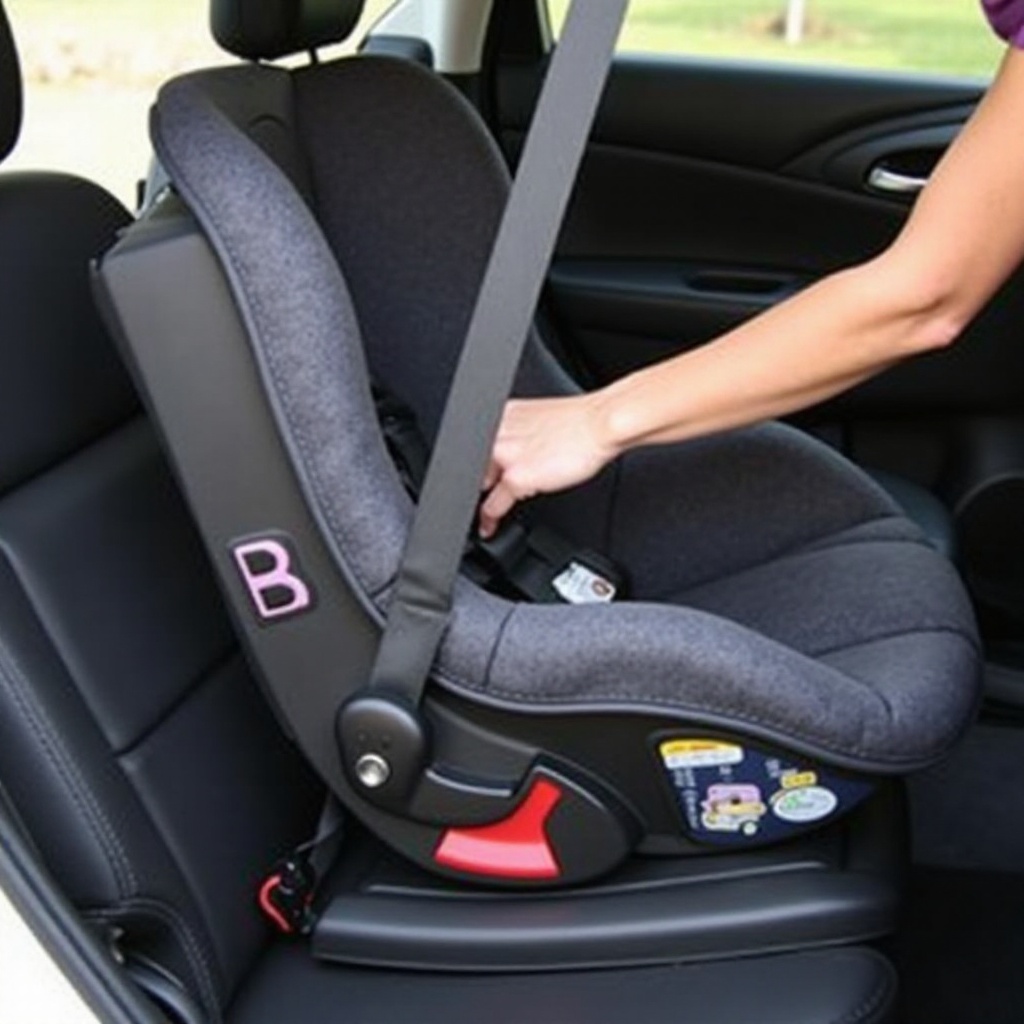Introduction
Ensuring your child’s safety while driving begins with correctly installing their car seat. Proper installation reduces risks significantly. Many car seats are not correctly installed, leading to compromised safety. This guide provides clear, step-by-step instructions to install a baby car seat using a seatbelt. By adhering to this guidance, you can make sure your journey is not only safe but also worry-free.

Preparing for Car Seat Installation
Before setting up the car seat, preparation is essential. Selecting the appropriate car seat involves considering your child’s age, weight, and height. Moreover, understanding your vehicle’s seatbelt system is crucial, as it differs between car models.
- Choosing the Right Car Seat: Research extensively to find car seats that meet the highest safety standards. Pay attention to reviews and ratings to ensure quality.
- Understanding Your Vehicle’s Seatbelt System: Different vehicles have varied seatbelt mechanisms, some featuring automatic locking features and others requiring manual settings.
Once you have chosen the right car seat and gained insight into your vehicle’s seatbelt system, you are ready for installation.

Step-by-Step Guide to Installing a Baby Car Seat with a Seatbelt
Correct installation ensures stability and optimal protection.
- Positioning the Car Seat Correctly:
Select either rear-facing or forward-facing based on your child’s age and size. Ideally, use the middle seat for enhanced safety. - Threading the Seatbelt through the Car Seat:
Identify the belt path dedicated to seatbelt installation. Carefully thread the seatbelt flat and untwisted through this path. - Securing and Locking the Seatbelt:
Extend the seatbelt fully, then let it retract, locking securely. Verify the lock by gently pulling; it should resist movement.
After securing the seatbelt, verify the seat stability, ensuring it moves no more than an inch in any direction.

Ensuring Safety and Stability
Perform comprehensive checks to confirm the car seat installation is tight and stable. A well-secured seat minimizes injury risks in case of sudden stops or impacts.
- Conducting a Tightness and Movement Test:
Place hands at the base and try moving the seat side-to-side and front-to-back. Movement should be minimal, less than an inch. - Double-Checking Harness Security:
Adjust the harness snugly around your child, with no added slack. The chest clip should be aligned with the child’s armpits.
Completing these checks assures you of the system’s efficacy and your child’s secure placement.
Common Installation Mistakes to Avoid
Certain errors often occur during installation. Awareness of these mistakes enhances the safety of your setup.
- Incorrect Seatbelt Threading:
Always consult the manual. Using incorrect paths for threading compromises safety. - Loose Fastening Issues:
The seatbelt must be taut, preventing vulnerabilities during sudden movements.
Having knowledge about these potential errors helps you maintain a vigilant approach throughout the installation process.
Conclusion
The task of installing a baby car seat with a seatbelt may appear daunting initially, but with careful attention to detail, it ensures your child’s safety effectively. Regular checks and reviews of the installation strengthen ongoing security, providing you with peace of mind during travels.
Frequently Asked Questions
What is the safest car seat position in a car?
Middle seating positions often provide the utmost protection due to their distance from car doors, minimizing impact risks during collisions.
How tight should the seatbelt be when installing a car seat?
The seatbelt must be tight enough that the car seat does not move more than an inch side-to-side or front-to-back.
Can I use seatbelt installation for all types of car seats?
Most infant and convertible car seats can be installed with a seatbelt. Always refer to the car seat manual for compatibility checks.
